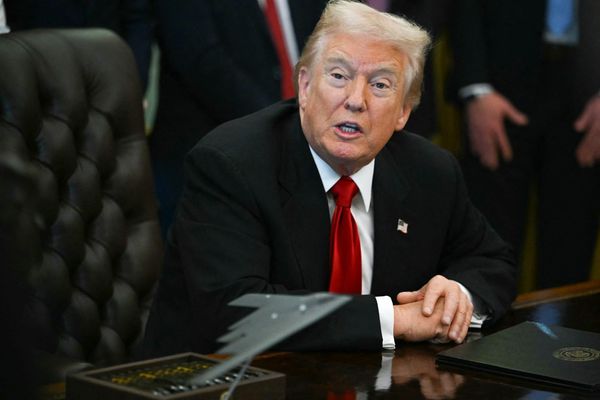In March 1955, an 18-year-old Jim Henson built a puppet from his mother’s old coat, a pair of blue jeans and some ping pong balls. The lizard-like creation first appeared on Afternoon, a television series on Washington D.C.’s WRC-TV, but became a regular on the five-minute Sam and Friends puppet sketch comedy show from May 1955. Over 70 years, the creature evolved into Kermit. The bright green frog now is a cultural icon.
To mark 70 years of The Jim Henson Company, the company has curated an auction of official memorabilia, including puppets, props, costumes and artwork. In a specially-recorded promotional video, Brian Henson, Jim’s son, provides a useful reminder that his father’s legacy is far greater than The Muppets.
Indeed, Henson made a significant contribution to the screen fairytale, a genre all too often dominated by Disney. To encourage fans and viewers to think beyond The Muppet Show and Disney, I offer a reappraisal of his career in my book The Fairy Tales of Jim Henson: Keeping the Best Place by the Fire.
By far the biggest section of the auction is made of items created for the productions and publicity from The Dark Crystal (1982) and the revival Netflix series The Dark Crystal: Age of Resistance (2019). The original fantasy evolved from an idea Henson had to create a story around an anthropomorphised reptilian race, which eventually became the formidable Skeksis.
His collaboration with the British artist Brian Froud led to the evolution of the intricate world of The Dark Crystal. The film follows Jen (voiced by Stephen Garlick), a delicate, fey-like creature from the nearly-extinct Gelfling race. Jen embarks on a quest to save the planet Thra by healing the Dark Crystal. He must complete his mission before the “great conjunction”, an event that would give the evil Skeksis power over the fragile world forever.
This ambitious endeavour was not the first time that Henson had used a fairytale-inspired story or aesthetic. As early as 1958, following a trip to Europe, he began to develop a version of Hansel and Gretel. Although it remained unfinished, fairytales became an established strand in Henson’s work.
This included two unaired pilots called The Tales of the Tinkerdee (1962) and The Land of Tinkerdee (1964), as well as the three television specials that make up Tales from Muppetland (1969-72). The latter are playful, gentle parodies and a Muppetisation of the well-known stories Cinderella, The Frog Prince and The Bremen Town Musicians.
Read more: The Muppet Christmas Carol turns 30: how the film became a cult classic
Fairytales even inspired two of Henson’s mid-1960s commercials for The Compax Corporation’s Pak-Nit and Pak-Nit RX – preshrunk fabrics used to make leisurewear. The ads were titled Shrinkel and Stretchel and Rumple Wrinkle Shrinkel Stretchelstiltzkin. Fairytale themes also appeared from time to time in segments of Sesame Street (1969-present) and The Muppet Show (1976–81).
Henson’s film Labyrinth (1986) is a beguiling blend of well-known coming of age fairy stories, most overtly Alice’s Adventures in Wonderland (1865) and The Wonderful Wizard of Oz (1900). These references are combined with original and innovative puppetry and design, and, of course, David Bowie as the charismatic Goblin King.
One of Henson’s final projects was the imaginative and technically inventive television series Jim Henson’s The Storyteller (1987-89). Inspired by her folklore studies at Harvard University, Lisa Henson encouraged her father to develop a show based on the rich European folk tale tradition, importantly, one that avoided the best-known tales, in favour of more the more unusual and challenging.
Fairytales are an important – and often overlooked – part of Henson’s legacy, from the final productions made during his lifetime to The Jim Henson Company’s later output (for example, Jim Henson’s Jack and the Beanstalk: The Real Story in 2001 and The Dark Crystal: Age of Resistance). Fans are also consistently teased with rumours of a Labyrinth sequel or reboot. Most recently, Robert Eggers is reported to be directing.
Henson should be considered one of the foremost creators of screen fairytales of the 20th century. As his fans celebrate the 70th anniversary of his creations, it’s time for the world to rediscover his magical body of work, beyond the much-beloved Muppets.
Looking for something good? Cut through the noise with a carefully curated selection of the latest releases, live events and exhibitions, straight to your inbox every fortnight, on Fridays. Sign up here.
This article features references to books that have been included for editorial reasons, and may contain links to bookshop.org. If you click on one of the links and go on to buy something from bookshop.org The Conversation UK may earn a commission.
Andrea Wright does not work for, consult, own shares in or receive funding from any company or organisation that would benefit from this article, and has disclosed no relevant affiliations beyond their academic appointment.
This article was originally published on The Conversation. Read the original article.







